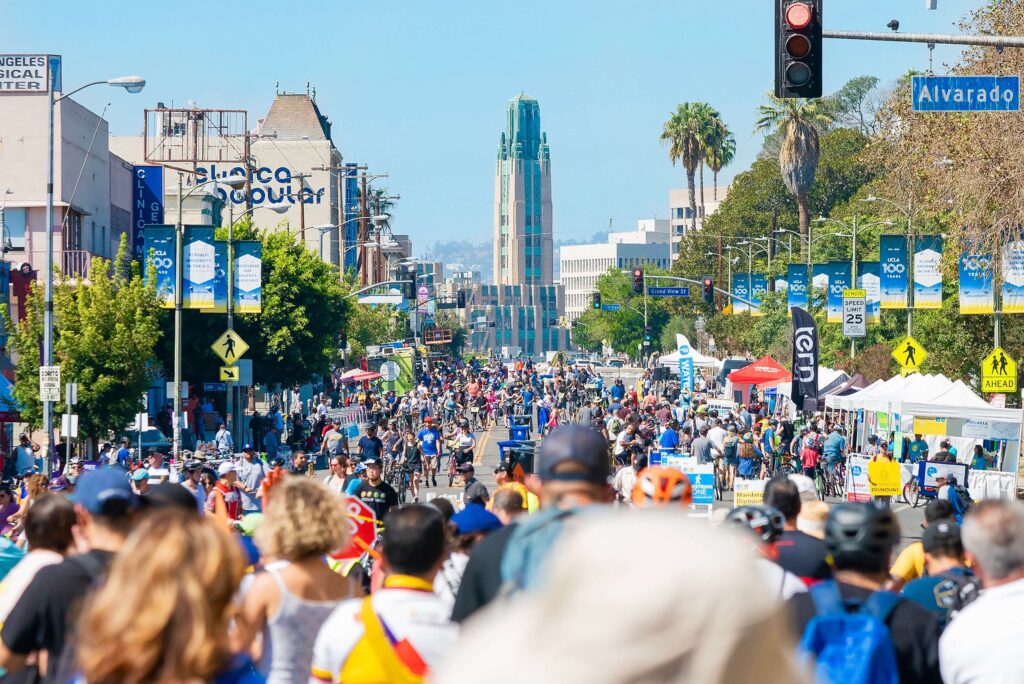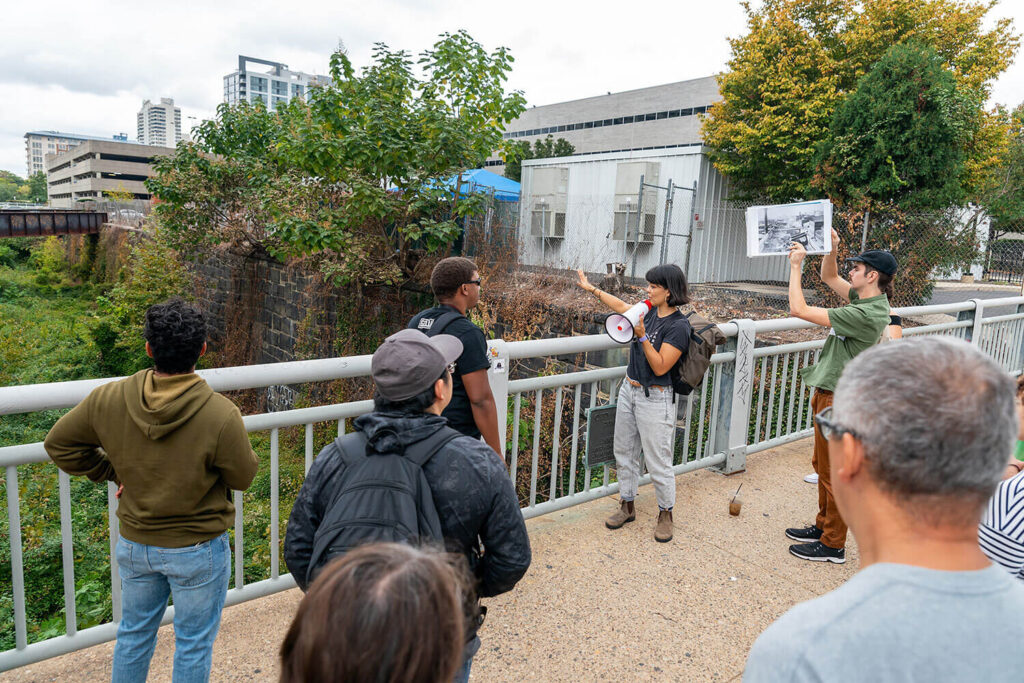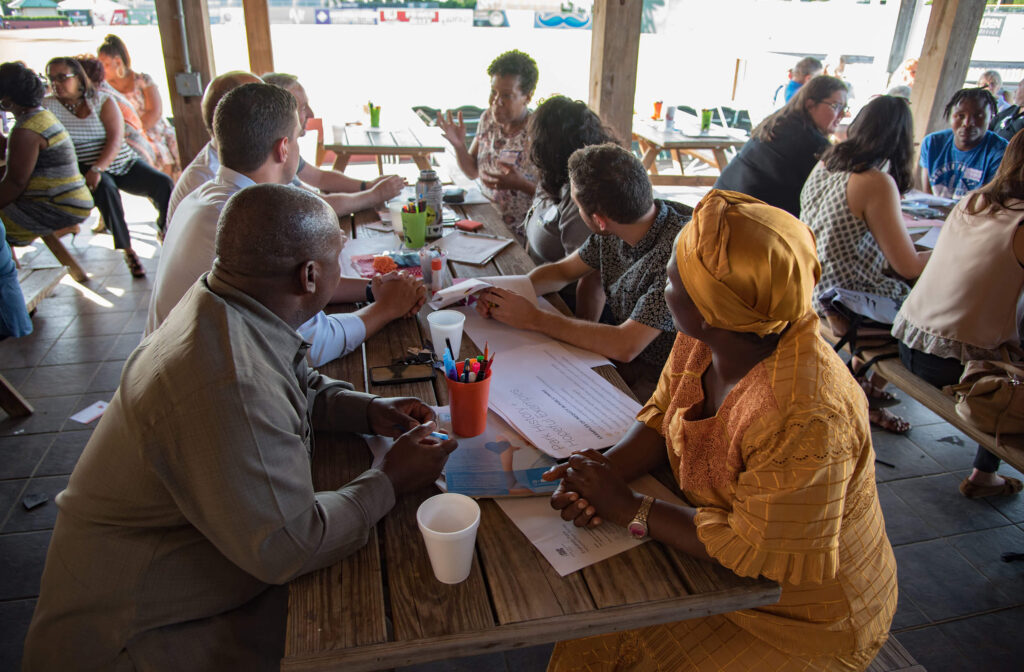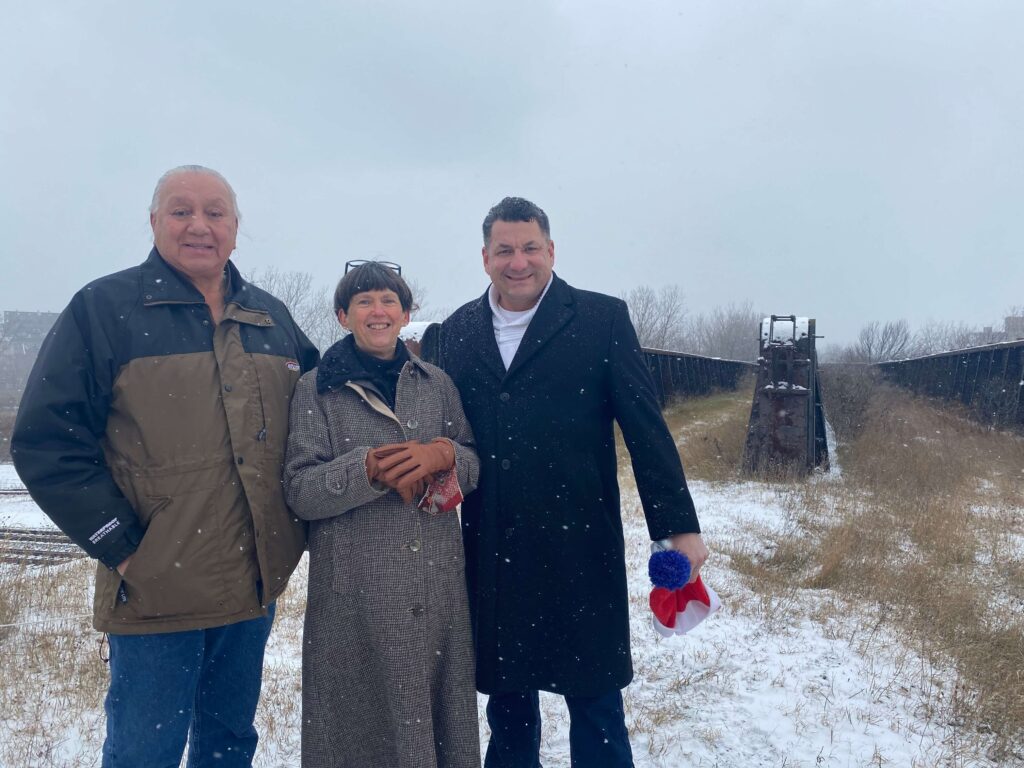Would you like to showcase your own work to embed equity in your infrastructure reuse project?
Connecting Los Angeles through dynamic outreach and partnership strategies

A public street activation event in Los Angeles, California. Credit: Giovanni Solis, CicLAvia
CicLAvia is a nonprofit organization and the largest public open space program in the United States. Inspired by Bogotá’s weekly Ciclovia, CicLAvia temporarily closes streets to car traffic and transforms them into public parks. Since 2010 CicLAvia has facilitated over 243 miles of open streets across 75 neighborhoods in and around Los Angeles County, representing 80% of the population. Through flexible programming, strategic outreach, and city relationships, CicLAvia is connecting LA, while showing the benefits of pedestrian-centric corridors, one open street at a time.
The open street program is very special in a car-centric city like Los Angeles where many of the host neighborhoods only see street closures for events such as the LA Marathon. CicLAvia saw an opportunity to connect LA neighborhoods by activating commercial corridors, facilitating economic benefits, strengthening community connections, and improving air quality. Given the physical size of events, outreach does not take a one-size-fits all approach. Strategies to involve and alert neighbors in the planning and activation process include: going door-to-door, presenting to neighborhood council meetings, partnering with libraries (and affiliate branches), sending mailers, cold-calling, and posting flyers. The goal is to encourage participation and attendance at public, free, all-ages, and all-abilities events. CicLAvia’s multifaceted and multimodal approach to outreach contributed to success and prepared them to be flexible during COVID shut downs.
CicLAvia takes a dynamic approach to activating open streets, taking extra care to recognize what makes each corridor along the routes unique. For example, in one neighborhood, CicLAvia talked with local advocacy organizations to learn about community resources. The goal of the open street program was then to showcase available resources to residents and visitors. Another example can be found in the activation of commercial corridors where CicLAvia created opportunities for small businesses to get involved and increase sales. They created a digital map and field guide highlighting small businesses and shared news of local deals and events, a model employed at other locations. A third example is with the activation of routes deemed as “high-injury,” which are typically in underserved communities. Here, the open streets helped residents and local officials feel and see what a future streetscape could look like, one that is pedestrian-centric and benefits public health. Through outreach, research, and on the ground efforts, CicLAvia sets important and realistic intentions for each open street, an important metric of success.
CicLAvia has two strategic partnerships with the City of Los Angeles and the LA Department of Transportation that helps them secure funding and take on smaller, more frequent projects. Until recently, CicLAvia would initiate the conversation about potential routes, but now the City, after seeing the success of open streets across the county, is proposing new routes in alignment with CicLAvia’s goal to connect different neighborhoods across the county. CicLAvia is contracted by the City, affording them special access to funding including from the Department of Transportation, which has specific funding to do these types of events. While the City has some funding for open streets, CicLAvia can partner with other cities in LA County and apply for funding from Metro for certain routes outside of the City of LA. Not all cities in LA County have separate funds for open streets programming, and Metro has made Open Street program funding available for all 88 cities in LA county. City-based contracts represent half of the funding for CicLAvia, while the other half comes from foundations, sponsors and individual contributors. Thus, a strong and strategic set of relationships with both public and private partners guarantee diversified funding streams, all of which are essential to CicLAvia’s success.
CicLAvia is a nonprofit organization and the largest public open space program in the United States. Inspired by Bogotá’s weekly Ciclovia, CicLAvia temporarily closes streets to car traffic and transforms them into public parks. Since 2010 CicLAvia has facilitated over 243 miles of open streets across 75 neighborhoods in and around Los Angeles County, representing 80% of the population. Through flexible programming, strategic outreach, and city relationships, CicLAvia is connecting LA, while showing the benefits of pedestrian-centric corridors, one open street at a time.
The open street program is very special in a car-centric city like Los Angeles where many of the host neighborhoods only see street closures for events such as the LA Marathon. CicLAvia saw an opportunity to connect LA neighborhoods by activating commercial corridors, facilitating economic benefits, strengthening community connections, and improving air quality. Given the physical size of events, outreach does not take a one-size-fits all approach. Strategies to involve and alert neighbors in the planning and activation process include: going door-to-door, presenting to neighborhood council meetings, partnering with libraries (and affiliate branches), sending mailers, cold-calling, and posting flyers. The goal is to encourage participation and attendance at public, free, all-ages, and all-abilities events. CicLAvia’s multifaceted and multimodal approach to outreach contributed to success and prepared them to be flexible during COVID shut downs.
CicLAvia takes a dynamic approach to activating open streets, taking extra care to recognize what makes each corridor along the routes unique. For example, in one neighborhood, CicLAvia talked with local advocacy organizations to learn about community resources. The goal of the open street program was then to showcase available resources to residents and visitors. Another example can be found in the activation of commercial corridors where CicLAvia created opportunities for small businesses to get involved and increase sales. They created a digital map and field guide highlighting small businesses and shared news of local deals and events, a model employed at other locations. A third example is with the activation of routes deemed as “high-injury,” which are typically in underserved communities. Here, the open streets helped residents and local officials feel and see what a future streetscape could look like, one that is pedestrian-centric and benefits public health. Through outreach, research, and on the ground efforts, CicLAvia sets important and realistic intentions for each open street, an important metric of success.
CicLAvia has two strategic partnerships with the City of Los Angeles and the LA Department of Transportation that helps them secure funding and take on smaller, more frequent projects. Until recently, CicLAvia would initiate the conversation about potential routes, but now the City, after seeing the success of open streets across the county, is proposing new routes in alignment with CicLAvia’s goal to connect different neighborhoods across the county. CicLAvia is contracted by the City, affording them special access to funding including from the Department of Transportation, which has specific funding to do these types of events. While the City has some funding for open streets, CicLAvia can partner with other cities in LA County and apply for funding from Metro for certain routes outside of the City of LA. Not all cities in LA County have separate funds for open streets programming, and Metro has made Open Street program funding available for all 88 cities in LA county. City-based contracts represent half of the funding for CicLAvia, while the other half comes from foundations, sponsors and individual contributors. Thus, a strong and strategic set of relationships with both public and private partners guarantee diversified funding streams, all of which are essential to CicLAvia’s success.
Share this Case Study


